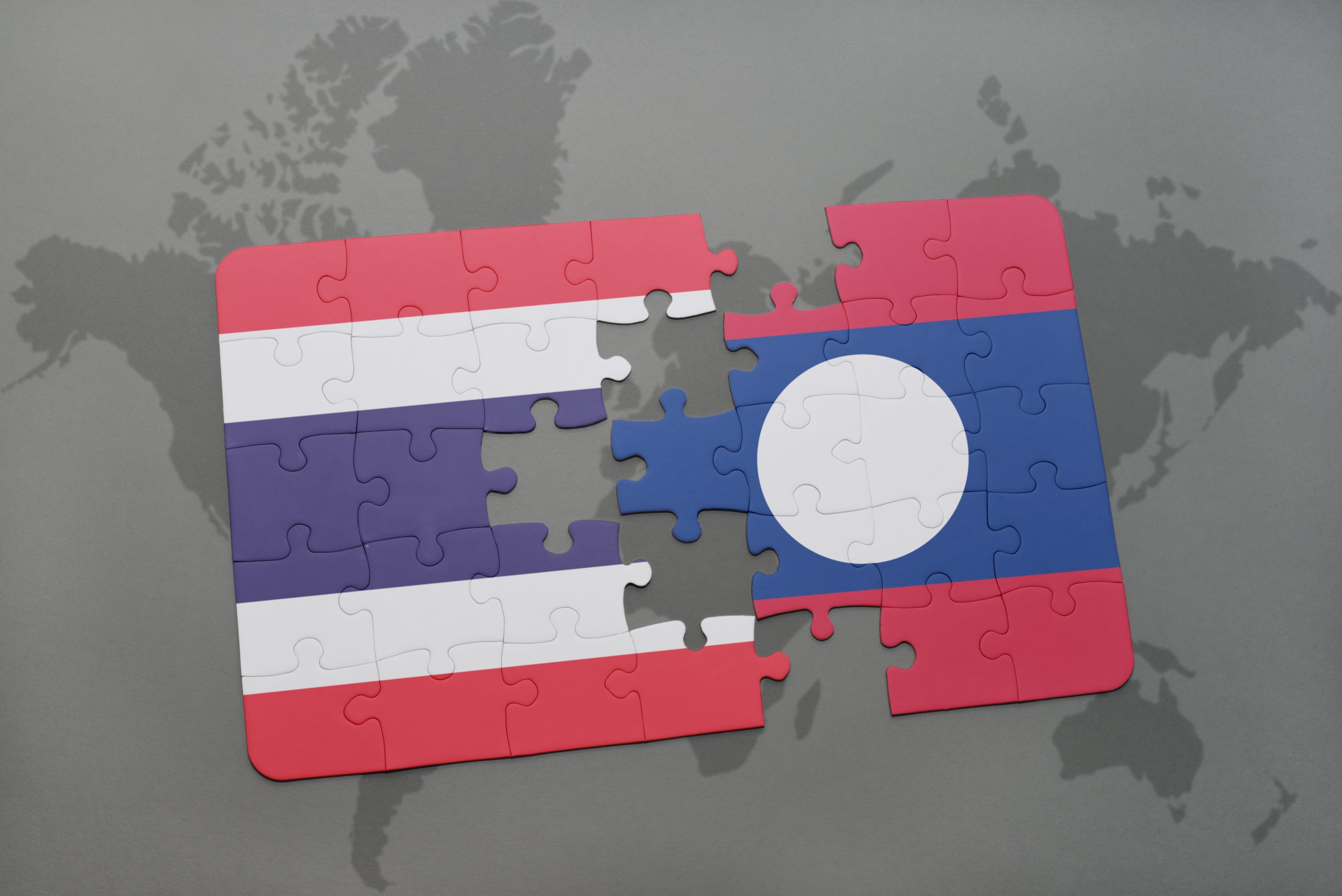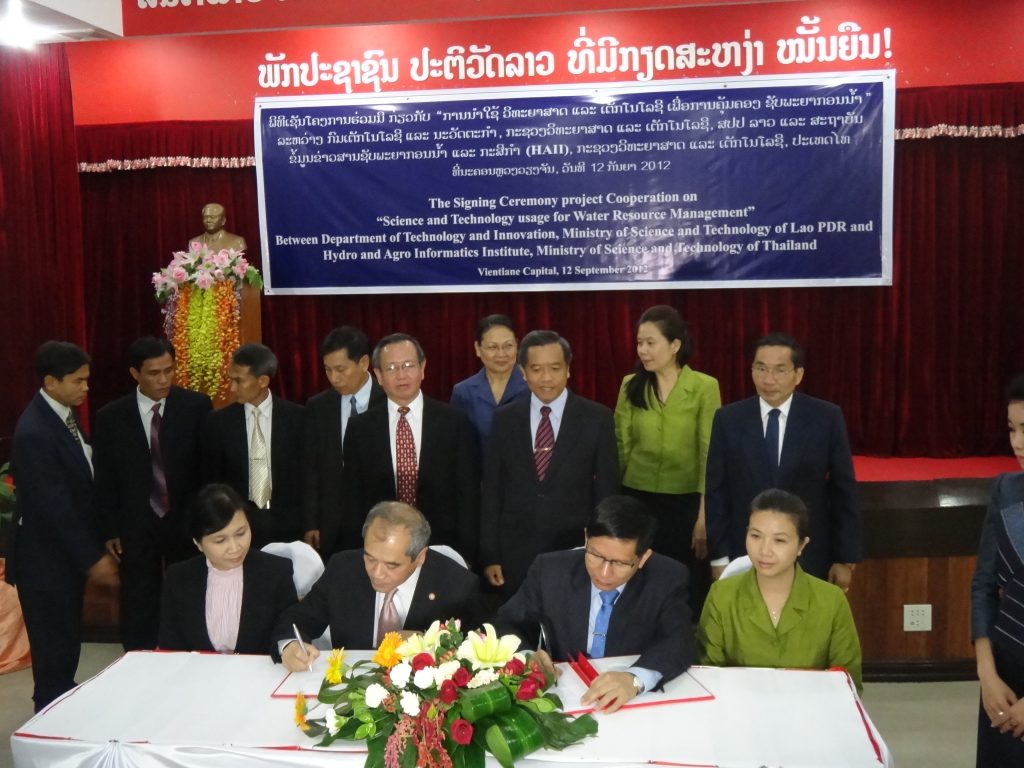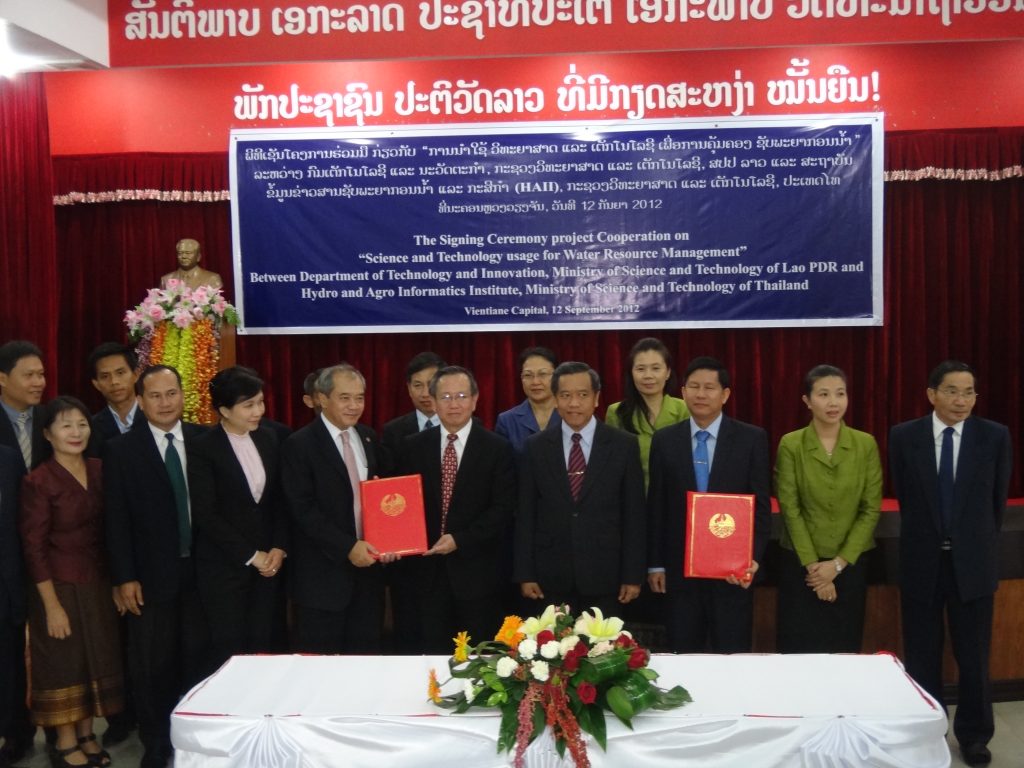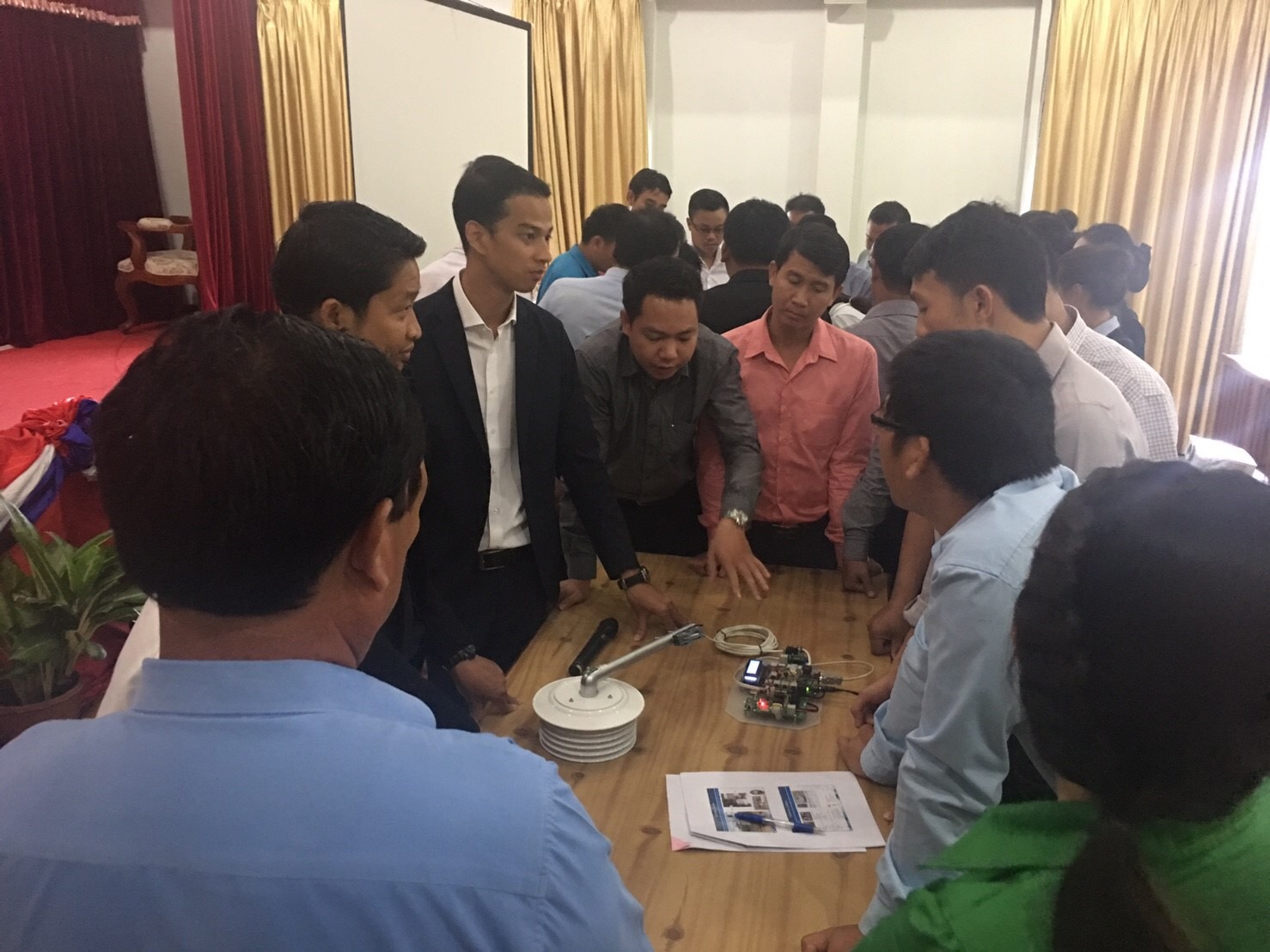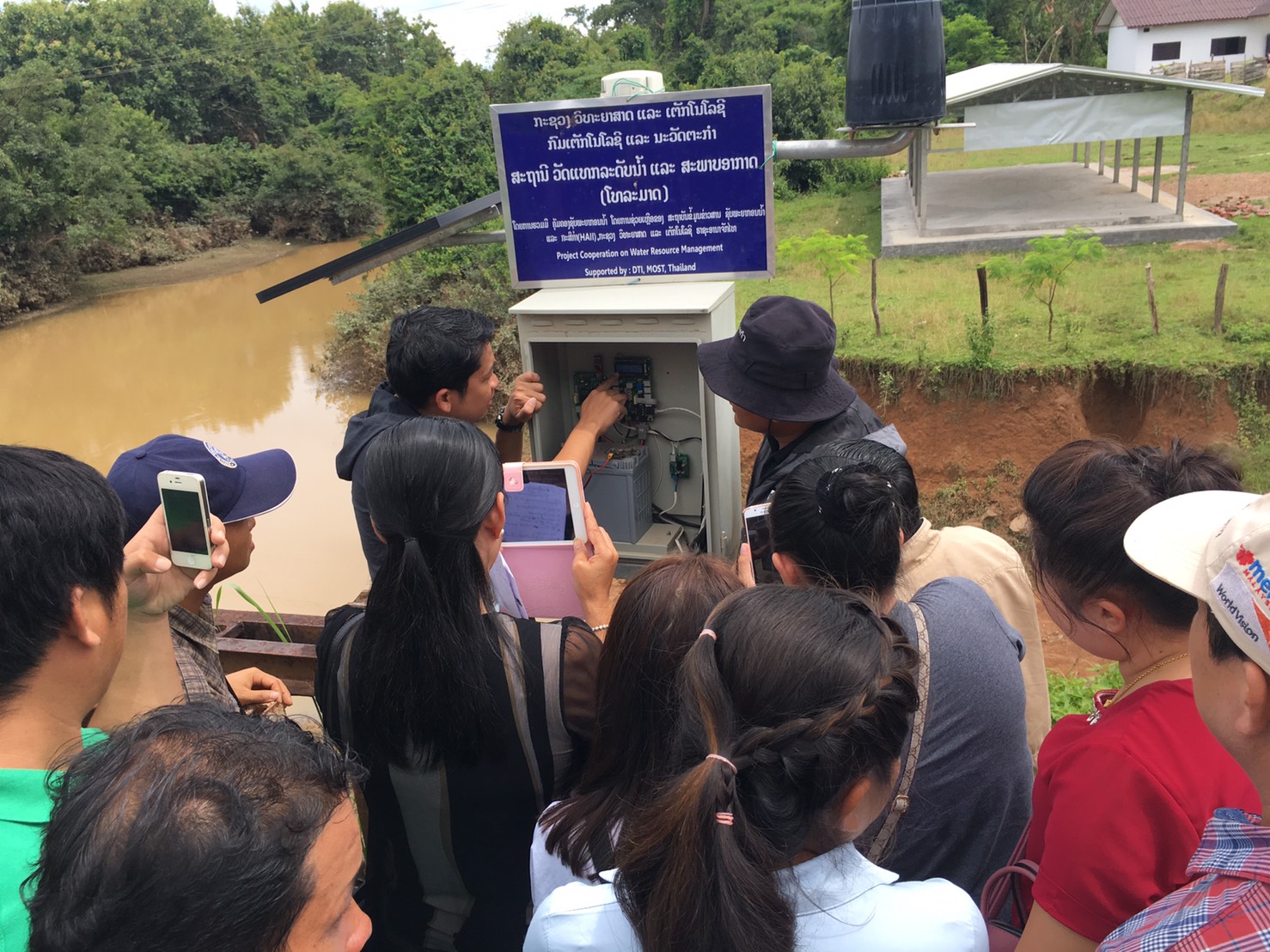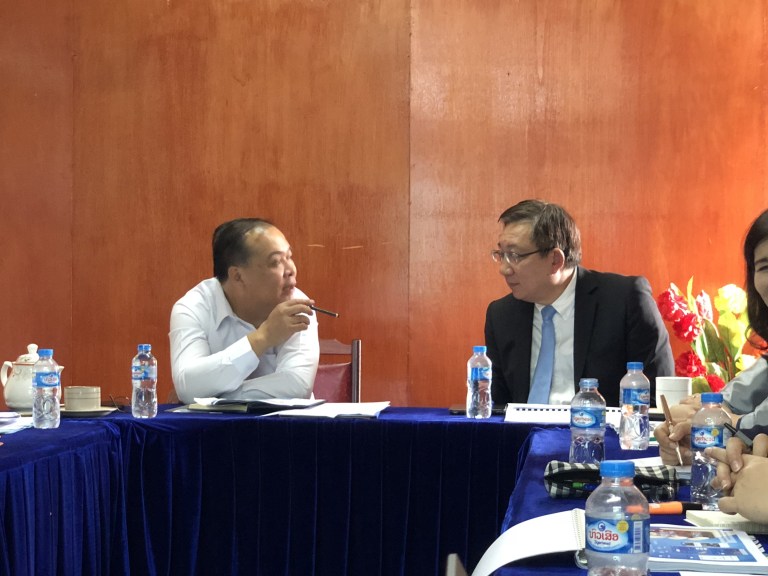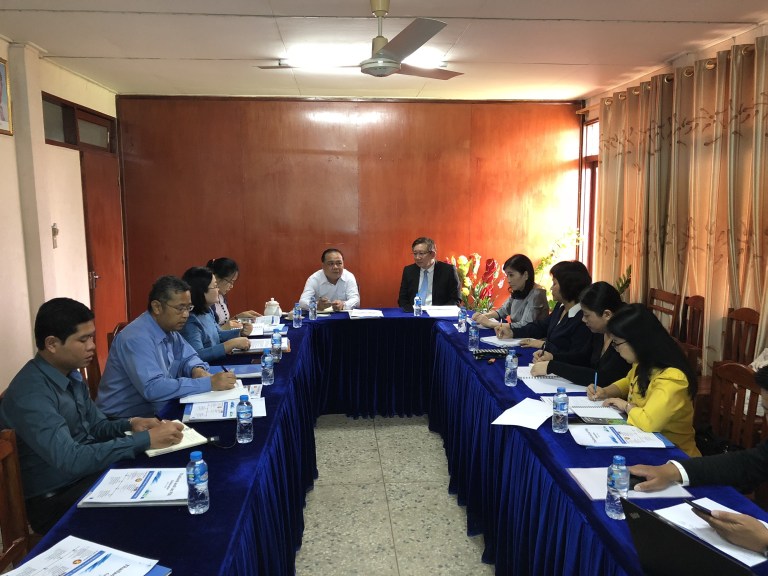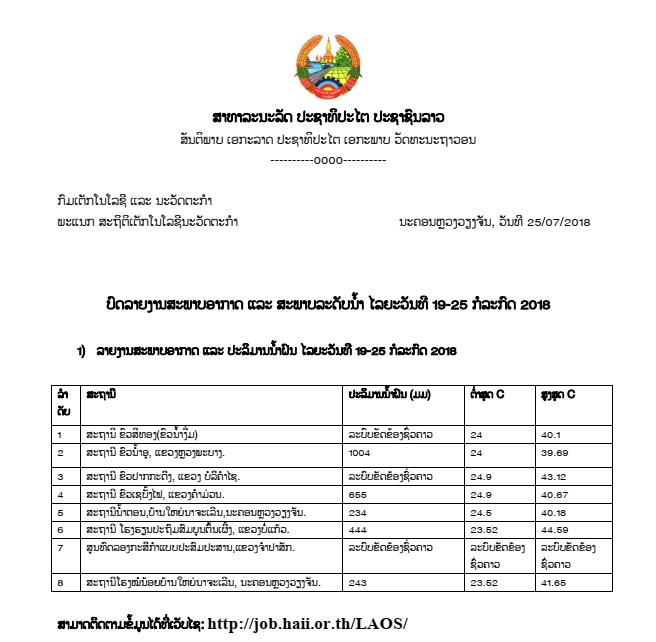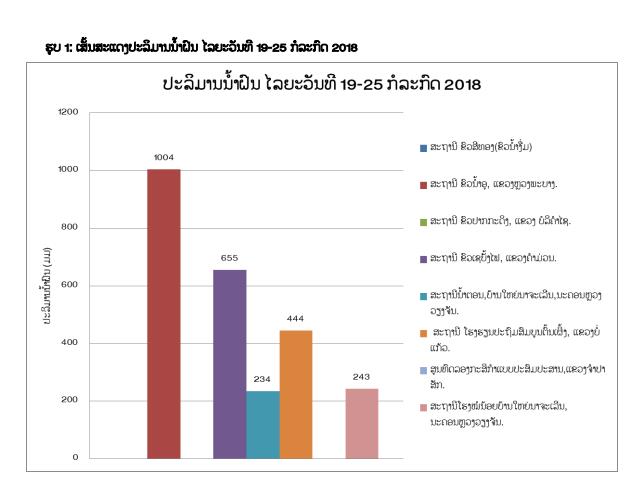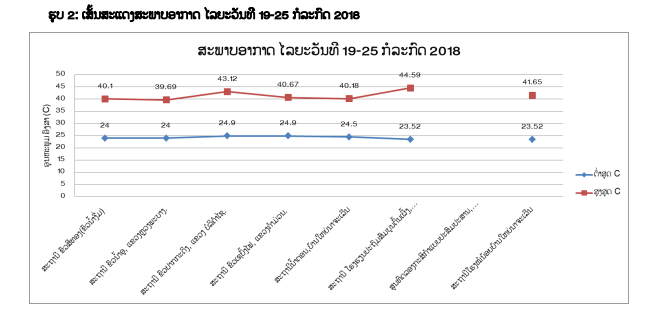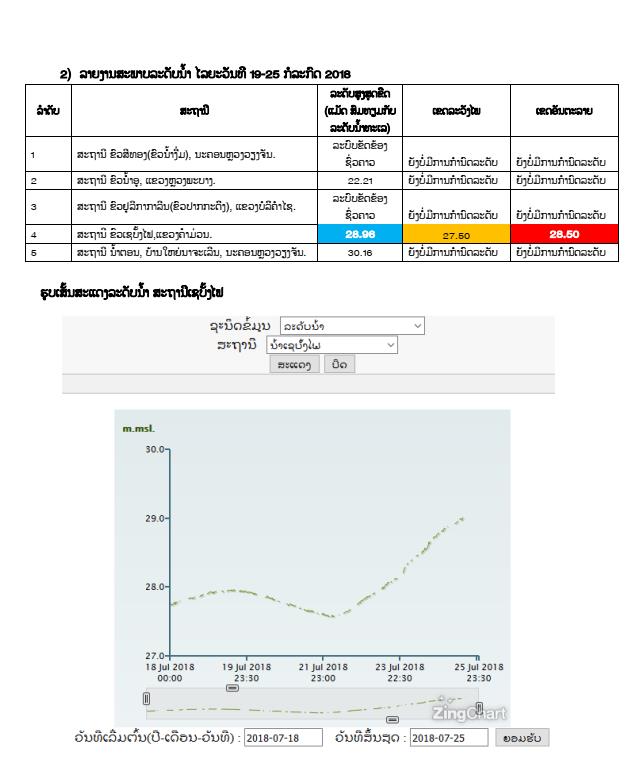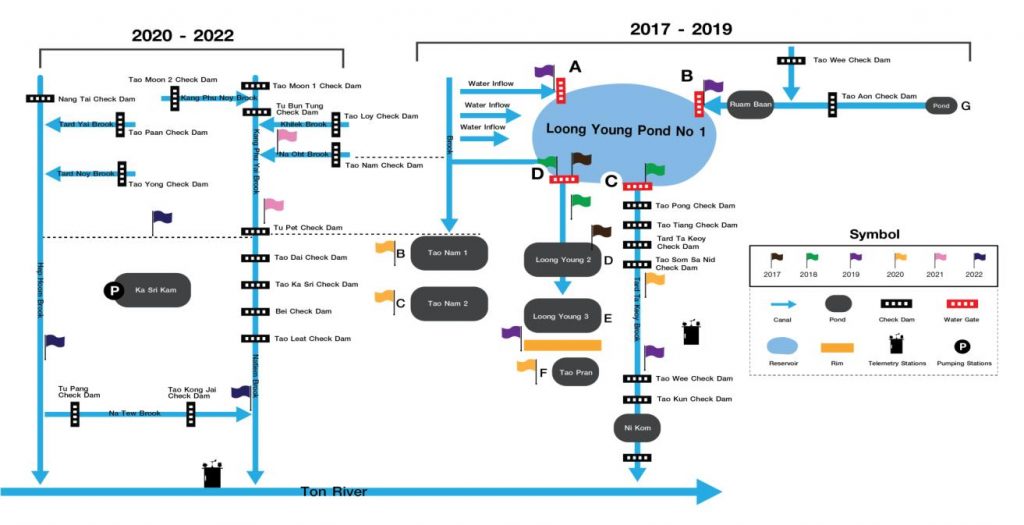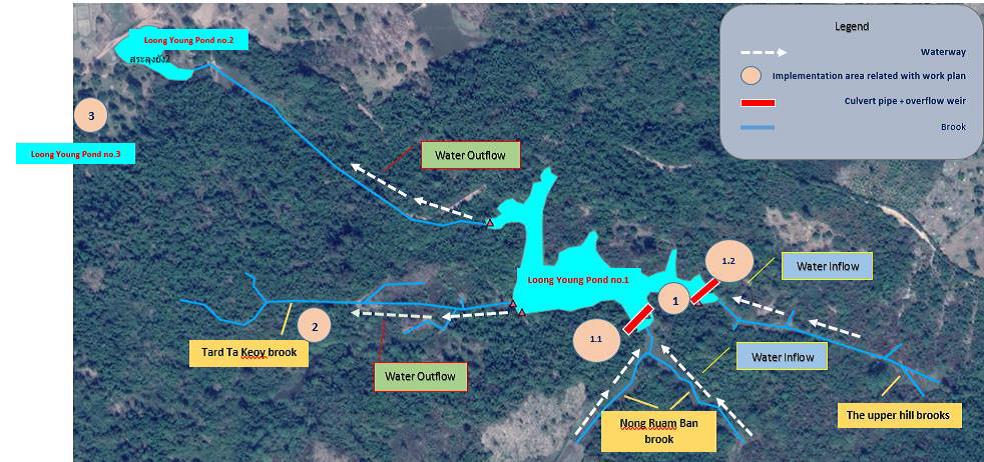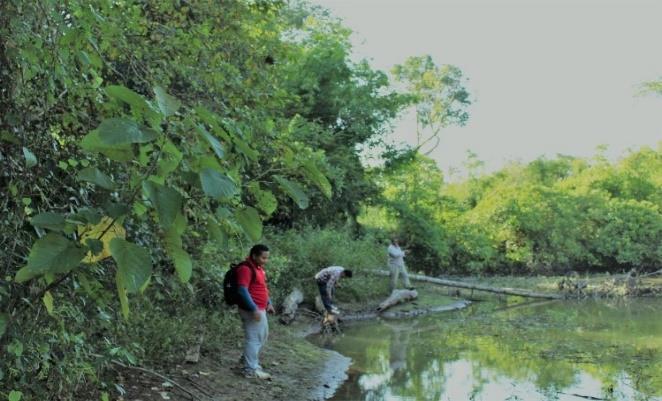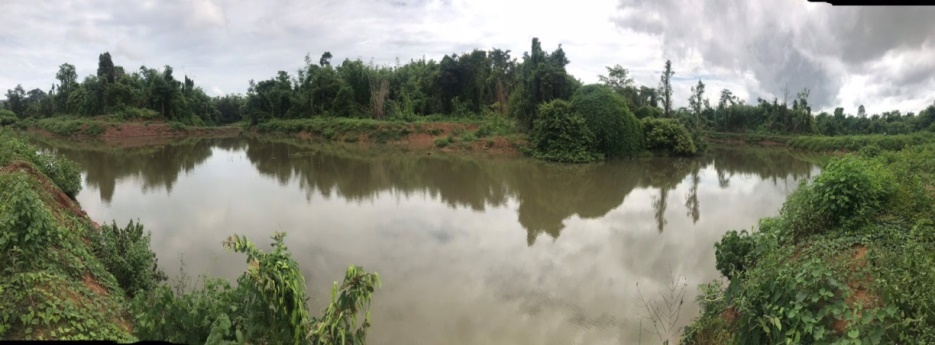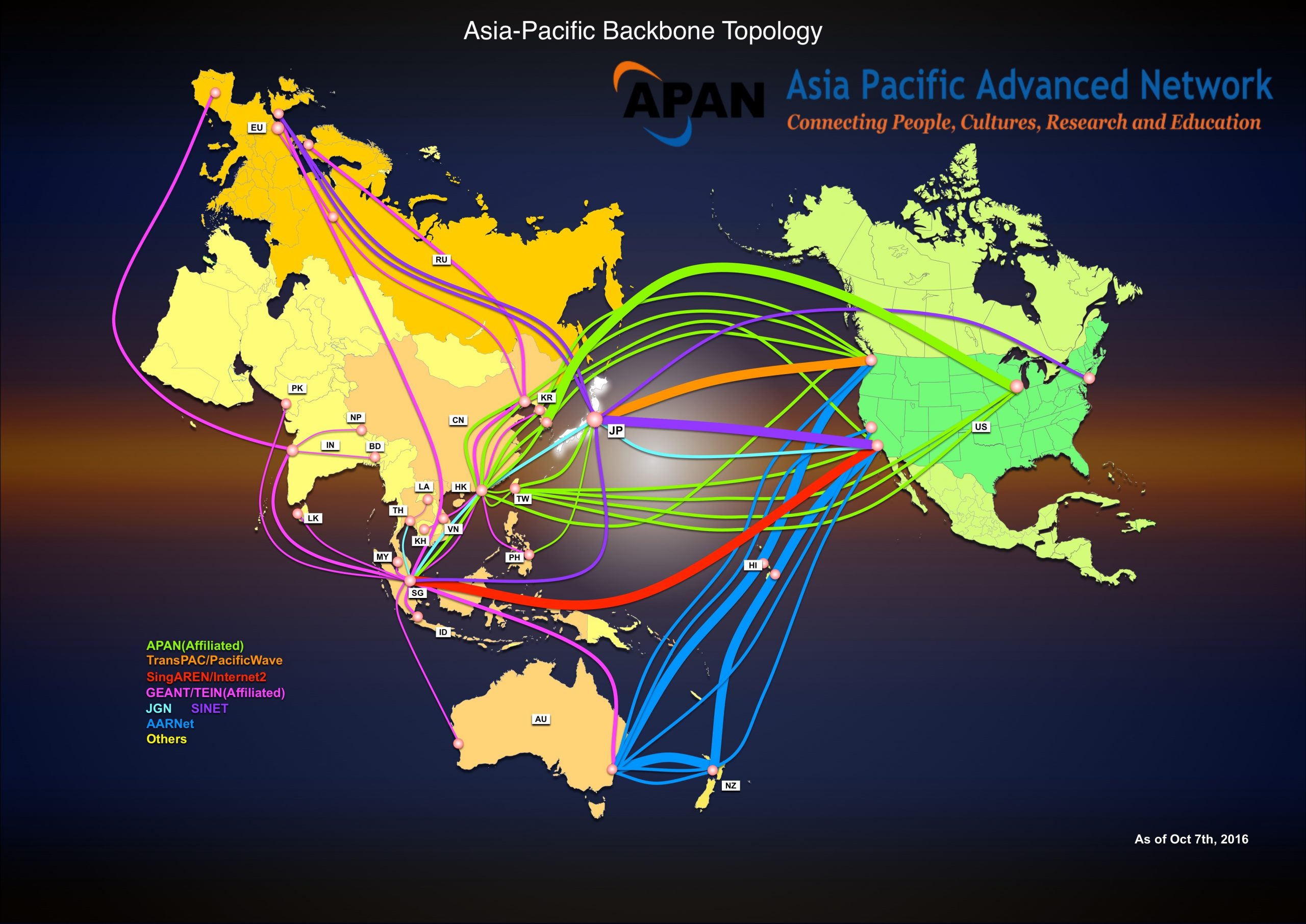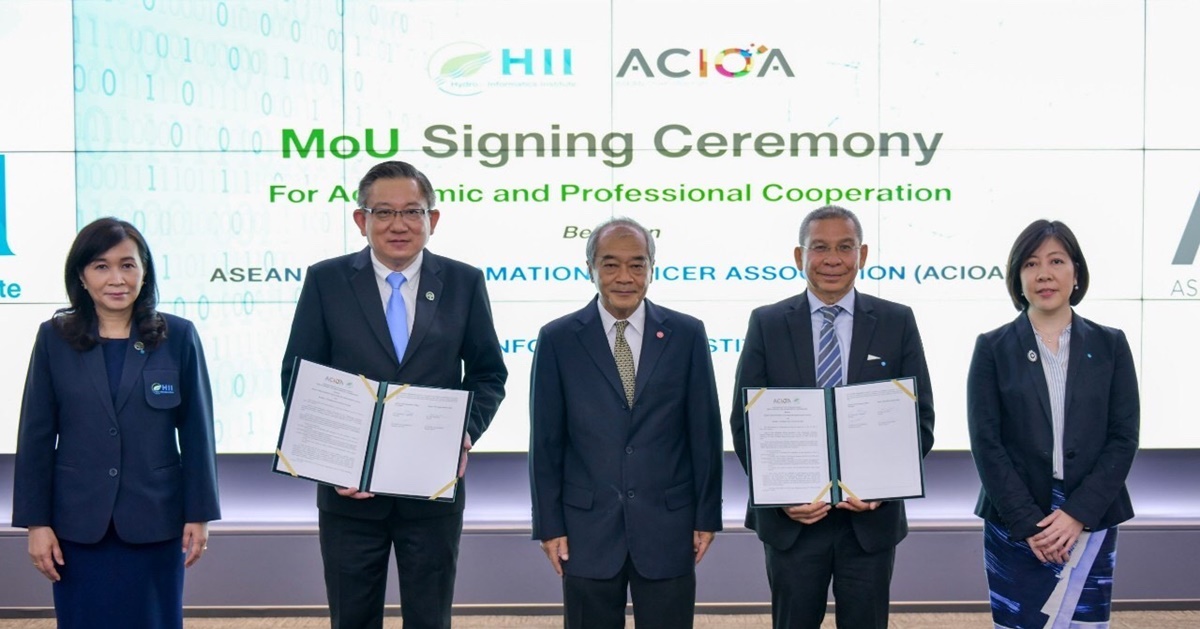
Collaboration with Lao PDR
04/11/2020
- Background
On 17 December 2010, the Minister of Science from ASEAN Member States and the representative of the ASEAN Secretariat endorsed the Krabi Initiative 2010 at the 6th Informal ASEAN Ministerial Meeting on Science, Technology, and Innovation (AMMSTI). The Krabi Initiative consists of 8 sectoral recommendations to improve competitiveness and quality of life of ASEAN people by Science Technology and Innovation (STI) as follows:
- ASEAN Innovation for Global Market
- Digital Economy, New Media and Social Network
- Green Technology
- Food Security
- Energy Security
- Water Management
- Biodiversity for Health and Wealth
- Science and Innovation for Life
During 26 – 27 November 2020, General Prayut Chan-o-cha, Prime Minister of the Kingdom of Thailand, made a courtesy visit to H.E. Mr. Thongsing Thammavong, Prime Minister of Lao People’s Democratic Republic, Lieutenant General Choummaly Sayasone, General Secretary (leader) of the Lao People’s Revolutionary Party (LPRP) and H.E. Mrs. Pany Yathotou, President of the National Assembly of the Lao People’s Democratic Republic. Based on the similarity of social and culture between the two countries, H.E. Prayut emphasized on promoting close relations and cooperation in all areas between the Kingdom of Thailand and Lao PDR. As a consequence of the courtesy call, the Ministry of Science and Technology Thailand and Lao PDR has signed the memorandum of understanding between both countries on the following area of cooperations:
- Biotechnology and biodiversity
- Renewable energy
- Electronic and computer technology
- Astronomy
- Synchrotron technology
- Space technology, remote sensing and geo-informatics system
- Metrology, standardization, testing, quality and conformity assessment
- Public awareness of science – science museum
- The policy of science, technology and innovation
- Innovation promotion for SME
- Science park
- Water Resources management
- Nuclear technology and nuclear safety, security and safeguards
- Other areas of cooperation which may be mutually agreed upon



2. Joint Research and Development Project on Science and Technology Usage for Water Resource Management
Hydro-Informatics Institute (HII), Thailand, and the Department of Technology and Innovation, Lao PDR, has a long collaboration since 2012. Both parties signed 2 agreements on “Joint Research and Development Project on Science and Technology Usage for Water Resource Management” on the following date:
- From 14 May 2012 to 13 May 2016 (4 years)
- From 1 September 2016 to 31 August 2019 (4 years)
Objective:
1. To collect water and weather data in Lao PDR for future planning
2. To build capacity of DTI and HII staffs regarding S&T for Water Resources Management
3. To promote and operate S&T usage for Community Water Resources Management in Lao PDR
Main activities from the collaboration can be are as follow:
2.1 Transfer of Technology
Transfer of surveying and measuring technology on weather and water level through the installation of Automated Telemetry stations and knowledge transfer on Community Water Resource Management.
2.1.1 Installed 8 telemetry stations along the main rivers in Lao PDR since 2012
(1) Ton Pheungn, Bokeo
(2) Nam Ou River, Luang Phabang
(3-4) Yai Nacharoen village, Vientiane (2 stations)
(5) Nam Ngum, Vientiane
(6) Nam Kading, Bolikhamsai
(7) Xe Bangfai, Khammouane
(8) Champasak, Champasak
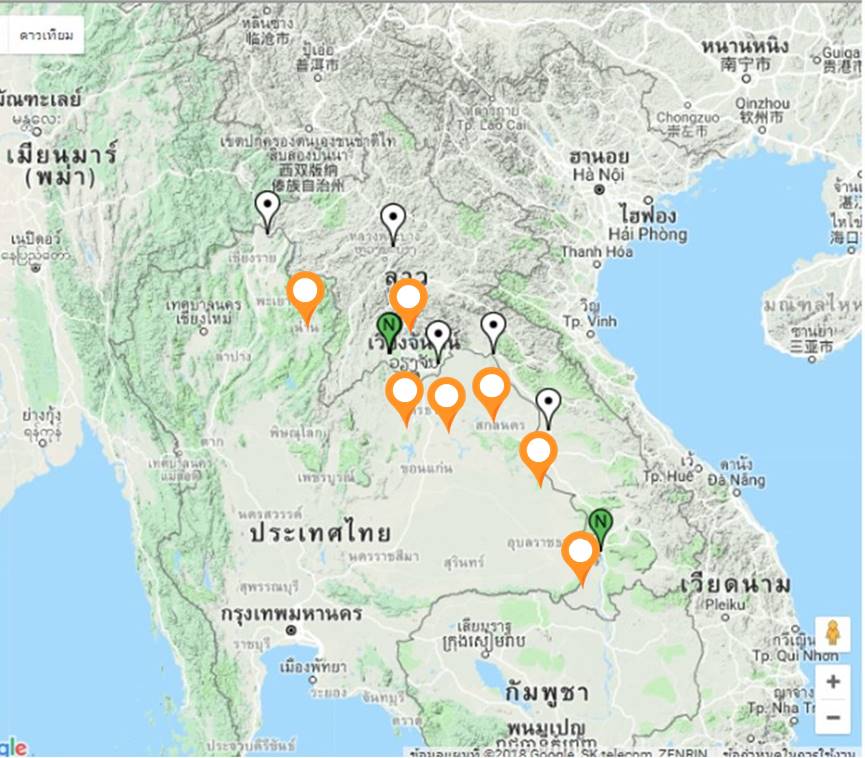
2.1.2 Community Water Resources Management (CWRM)
In 2017, HII has collaborated with Utokapat Foundation under Royal Patronage of H.M. the King, The Coca-Cola Foundation, Department of Technology and Innovation (Lao PDR), Sangthong District, and Nathiem community which to transfer knowledge on Community Water Resources Management (CWRM) to the pilot area, Yai Nacharoen village, Vientiane. As a consequence, this project has become successful evidence that community water resources management in Thailand can be expanded to neighboring countries.
This project is the successful expansion concept of community water resources management in Thailand to neighboring countries located near the Mekong River. The process of this project will develop water structure, dredge up and linkage water resources, and reinforce water structure for water resources management which will increase water storage of 147,324 cubic meters and develop a water distribution system at Ban Nathiem school. The project will later expand the operation and development of water structures to nearby areas in the future.
2.2 Capacity Building
HII has built capacity of DTI personnel regarding the application of S&T for water resources management as follows:
(1) In 2013, two DTI staffs had been trained and worked with HII on the following topics:
- Water resource management program – 6 months
- The application of S&T for CWRM – 3 months
(2) In 2014, 6 DTI representatives had been trained on how to setup server to obtain data from Automated Telemetry Stations
(3) In 2015, Training on QGIS program at Ban Toom, Yasothon Province and Ban Pachan, Ubon Ratchatani Province for 9 trainees from DTI and Lao PDR’s Irrigation Department. The training emphasized on data observation, collection, and integration for analyzing and identifying water management plan.
(4) In 2017, Training on the usage of telemetry station (weather and water level) for 36 trainees from several Lao PDR’s sub districts such as Luang Phra Bang, Jam Pa Sak, Bor Keaw, and Sang Thong. HII trained participants on the application of science and technology for data usage, the monitoring from telemetry station, the maintenance of telemetry stations, the preparedness for new installation of telemetry station, and the expansion of the success story in the future.
The trainees from Lao PDR had learned the example of S&T implementation in flood and drought area from Wieng Kook community in Nong Kai province, Boong Kla community in Bueng Kan Province, and learned the example of flood, drought, and flash flood management from Toom community in Yasothon Province and Pachan community in Ubon Ratchatani Province.
3. The expansion of collaboration to Ministry of Natural Resources and Environment, Lao PDR
On 13 July 2017, Lao PDR legislated rules, regulations, and policies on meteorology and hydrology protection, and monitoring of Lao PDR’s meteorology and hydrology operation which is responsible by Department of Meteorology and Hydrology. The department is accountable for controlling and installing telemetry stations.
On 11 June 2018, the representative from Thailand including HII’s director, HII’s staffs, representatives of Thailand International Cooperation Agency, representative of the Thai Embassy in Vientiane, and representative of DTI, visited the Department of Meteorology and Hydrology (DMH), Ministry of Natural Resources and Environment (MONRE). The team met DMH’s director and discussed on the cooperation between HII, DTI and DHM for the transfer of 8 automated telemetry stations from DTI to DMH. From the discussion, Minister of Science and Technology and Minister of Natural Resources and Environment mutually agreed to accept the transfer of telemetry stations to the Department of Meteorology and Hydrology, Lao PDR which was later transferred on 19 April 2019.
4. Future Plans
4.1 Install 11 automated telemetry stations supported by Friends in Need (of “PA”) Volunteers Foundation (FOP)
4.2 Expand pilot project area to Ban Hay, Xaythany District, Vientiane Capital
5. Example of S&T
5.1 Disaster Risk Reduction (DRR)
24 July 2018, Sơn Tinh tropical storm hit Lao PDR and caused heavy rainfall and later consequent to the sever flood in Attapue province. DTI retrieved weather information from the local telemetry stations and reported to the Minister of Science and Technology and other related agencies to prepare for the situation. HII has also used information from the Lao’s telemetry stations to monitor the situation and collaborate with Department of Disaster Prevention and Mitigation. The information obtained from Ton Pueng, Nam Oou, Roang Mornoi, and Sei Bangfai station, reported the consistent raining in Lao PDR since the beginning of July. While the tropical storm passed upper Lao PDR, 19 July 2018, the highest water level was measured at Luang Phra Bang station with the number of 487 ml/24hrs at Luang Phra Bang station, and the nearest station in Xe Namnoi showed 4-day continuous heavy rainfall and heavy rainfall afterward.
Due to insufficient telemetry stations over the affected area, there was still inefficient warning system and response.
5.2 The collaboration with private sector for the use of technology for water resources management for sustainability
Utokapat Foundation under Royal Patronage of H.M. the King, Department of Technology and Innovation Lao PDR (DTI), Hydro-Informatics Institute (HII), The Coca Cola Foundation, Local authority of Sangthong District, Bungkla Community Water Resources Management (CWRM) Committee and CWRM Committee of Yai Nacharoen Village have collaborated in the “Research and Development Project on Science and Technology Usage for Water Resource Management”. The project was implemented in 2 main areas: 1) Automated telemetry technology for water resources management and 2) Capacity building and exchange of good practices for Community Water Resource Management following His Majesty King Bhumibol Adulyadej’ Initiative by expanding the good practice’s story including the community’s food security from Thailand to Lao PDR.
In 2017, Ban Nhainachaloen has been selected as a pilot area for CWRM for the following details:
Problem
Yai Nacharoen Village, Sangthong District, Vientiane Capital, Lao PDR comprised of Nalad Village, Natiem Village and Na Mieng Village. There are 618 households with total 1,299 people. Most of the villagers earn their living by in- and off-season rice growing. The community confronted with water scarcity in dry season due to low rainfall, deforestation in watershed area, lack of water retention systems, shallowed sub-canals, and waterways. As a consequence, the area is unable to retain water for dry season and often faces flooding in rainy season.
Solutions
Representatives from Utokapat Foundation under Royal Patronage of H.M. the King, Hydro-Informatics Institute, The Coca Cola Foundation, and Bang Kla Community Water Management Committee Thailand, and representatives from Department of Technology and Innovation, Ministry of Science and Technology, and Ban Nathiem Community Water Management Committee Lao PDR discussed on the planning of water infrastructure development by dredging, linkage of water sources, promoting of water management infrastructure, and learning on water mapping which would be used for community water resources management. The concept of this management has been adopted by HII from the initiative of King Rama IX on the local communities in Thailand and transferred to apply in Ban Yai Nacharoen, Lao PDR.
Implementation
2017
Implementation
– Dredged Loong Young pond no. 1 – no. 2
– Dredged Technical Agriculture Centre pond
– Installed irrigation system on New Theory pilot study site, and 2 PE tanks 1,000 liters/ tank
Achievements
– Solved flood and drought problems, benefits to 0.088 km². and 10 household
– Linked between monkey cheeks and several canals for systematic water resources management
– Increased water capacity in 3 monkey cheek pond of 73,636 m3
2018
Implementation
– Installed culvert pipes and water gates at Loong Young pond no.1 and no. 2
– Built water gate and piping infrastructure from the water drainage way from Loong Young pound no. 1 to Huai Tad Ta Koey
– Dredged canal to link Loong Young pond no. 1 and no. 2
Achievement
– Solved flood and Drought situation in agricultural areas of 1.92 km², 101 households, 713 people
– Linked between monkey cheeks and several canals for systematic water resources management
– Increased water capacity 42,297 m3
2019
Implementation
– Heightened Loong Young pond no. 2’s dyke
– Installed box culvert in Loong Young pond no. 2
– Dredged Huai Tat Ta Koey
– Built drainage chute
Achievement
– Solved flood and drought situation in agricultural areas of 1.92 km² and 101 households of 713 people
– Linked monkey cheeks and several canals for systematic water resources management
– Increased water capacity in Loong Young pond no.2 to 12,926 m3
– Increased water capacity in Huai Tat Ta Koey to 18,465 m3
From the consistent development in Ban Yai Nacharoen, the community has more water capacity and better water management efficiency which sufficient for agriculture in dry season. The villagers changed their agricultural practice to New-Theory agriculture which allow them to reduce their expenditure while increasing income.
